16 Things I Learned on my Tour of the Jewish Ghetto in Rome
In the heart of Rome is 4-block area called the Jewish Ghetto (or Jewish Quarter). This thriving neighbourhood and close-knit community lived through a turbulent history; so, I reached out to local guide Micaela Pavoncello, of Jewish Roma, to gain a deeper understanding of it.
She spent several hours walking us through the streets and visiting the iconic Synagogue and Jewish Museum. She passionately shared personal anecdotes and historical stories with us. We covered the original construction and early life within the ghetto, the Second World War, restitution efforts and today’s current climate.
Here are 16 things that I took away from the tour.
GO IF YOU LIKE:
Religious History | Architecture | Second World War History | Artichokes | Desert Colours
EARLY HISTORY OF THE JEWISH-ROMANs
1. The Roman Jews are the oldest Jewish population outside of Israel
Rome is home to the oldest Jewish community in Europe, dating back to around 160 BCE. In fact, unlike Jewish populations from the rest of the world, the Roman Jews came directly from the Holy Land.
Related Travel Guide: 3 Days in Rome | Itinerary and Visual Travel Guide
2. The rise of anti-semitic sentiment correlated with the rise of Christianity
Before the rise of Christianity, the Jewish population in Rome lived without persecution. In fact Julius Caesar was friendly with the community and let them practice their religion freely.
The tide slowly shifted when Jewish Romans were exiled by succeeding emperors Tiberius and Claudius. On top of this there were revolts and wars leading to the defeated Jews being brought to Rome as slaves.
Though these periods were tough, greater restrictions came with the rise of Christianity and its establishment as the legal religion of the Roman Empire.
THE JEWISH GHETTO
3. The ghetto was built in an undesirable flood location
In 1555 Pope Paul IV issued a papal bull which confined all Roman Jews to live within a designated area. This became the Jewish Ghetto. The Jewish population, which was previously free to live throughout Rome, was now forced into a small area next to the Tiber River.
The decision for the location to be beside the Tiber River was calculated. Situated at a lower elevation, and without embankments at the time, it was prone to flooding in the winters. During the ghetto period it was common for the neighborhood to be wet and dreary with unsanitary living conditions.
4. The “Jewish Ghetto” was gated off for 3 centuries
The ghetto itself was gated off to prevent the community from expanding and freely visiting the rest of the city. It also allowed the church to put pressure on the Jewish people to convert to Christianity.
A curfew was implemented so that everyone had to be inside the ghetto limits by nightfall. Those who did leave during the day were forced to wear identifying clothing. The men wore yellow pointed hats and the women wore yellow scarves.
They were also barred from owning property and practicing higher-skilled professions like medicine. The few Jewish doctors who resided in the ghetto could only aid Jewish patients.
Most of the men worked as money lenders or sellers of second-hand clothing, while the women were skilled seamstresses. Inside the Jewish Museum, Micaela pointed out elaborate Torah covers fashioned by old dresses - they were skilled seamstresses indeed.
5. The Ghetto area only extended to 4 blocks
From the Tiber River the original ghetto extended about 4 blocks in all directions covering about 33,000 square meters. Although the ghetto was closed off, the community grew from 2,000 to 8,000 people yet could not expand beyond the limits of the gates. Housing was forced to build upwards (though limited to 5 stories) making for crammed living conditions.
These towering buildings now cut off the sun from the narrow street filled with flood water; we begin to get a better visual of what the ghetto was like.
Along the streets of Via del Portico d'Ottavia are original houses from the ghetto. One of the most thought-provoking areas is where the remains of a gate used to be. It’s easy to see a stark contrast between the houses that were inside the ghetto and those directly outside. Notice in the below photograph how there are almost 2 floors in the ghetto house (left) to every floor of the building outside the ghetto (right). This proves how cramped the living conditions were for the Jews.
6. There are churches located at the ghetto entrances
It stuck me as odd to see churches surrounding an area who’s population wouldn’t attend them, but during the ghetto era the church was constantly finding ways to try and convert the Jewish community.
The churches were inscribed with anti-Semitic text trying to convince the Jews to leave their faith. The community was forced to attend church sermons on shabbat. Many jews would forcibly attend these sermons but stuff bread or wax in their ears.
The irony is that the forced preaching and closely confined living conditions brought the Jewish community together and made them stronger; there were very few who actually converted.
7. The Jewish synagogue has a unique dome
After the unification of Italy in 1870 the ghetto was demolished and Jewish Romans were granted citizenship. After the demolition, the Jewish community wanted to build a new synagogue; something that would stand out from the other grand buildings in Rome.
In 1904 the Tempio Maggiore was complete and topped with a square aluminum dome. This is visible from blocks away and is the only square dome in the city.
8. There is Much Religious symbolism in the interior design of the Synagogue
Not surprisingly, the interior colours and patterns of the Synagogue are full of religious symbolism. The overall sandy colour of the columns pay tribute to the desert of Jerusalem.
The ceiling has a rainbow colour scheme which reflects God’s promise to Noah that never again would any living creature be destroyed by a flood. Considering the ghetto was prone to flooding, this symbolism can be taken quite literally.
The blue ceilings mimic starry sky which is mean’t to represent the idea that there will be as many Jewish people as there are stars in the sky.
ROMAN JEWS DURING THE SECOND WORLD WAR
9. The Roman Jews were some of the last to be sent to concentration camps
Though there was much anti-semitism in Italy during the Second World War, the Roman Jews were some of the last in Europe to be sent to concentration camps. During the war, the Jewish community in Rome lived relatively untouched and fared much better than those in Germany and Eastern Europe.
There were a few reasons for this. Firstly, because of their historical limitations in the ghetto they were not as wealthy compared to their counterparts in Germany. This created less envy from the Christian-Italian population.
Also, the fascist regime in Italy wasn’t as organized as the German one, nor did they put anti-semitism in the forefront. This Italian inefficiency bought the Jewish people more time to escape.
10. On October 16, 1943 over 1,000 Jewish people were taken from the ghetto
In September of 1943 The Nazis occupied Italy. At the beginning of the occupation the Nazis struck a deal with the Jewish-Roman community. In exchange for 50kg of gold, they would be left in peace.
The community came together and raised the amount but unfortunately the Nazis disregarded the deal and tragedy struck the ghetto. On October 16, 1943 the Nazis stormed the ghetto, closing off all the gates and confining the community.
1,095 Jewish Romans were rounded up and sent to concentration camps. After the war, only 16 of them returned.
11. There is still visible evidence from the October 16, 1943 roundup
There are still markings of the horrific roundup in the city. Micaela pointed out holes in some of the original wooden doors from the butts of the rifles used to knock them down.
12. Brass plaques mark the houses of victims from the holocaust
We can pay our respects to those lost in the Holocaust by taking a moment to reflect at the cobblestone-sized brass memorial plaques which are embedded in the ground, outside of victims houses.
Each plaque outlines the name of the person and their last place of residency. It also includes their birthday and when and where they passed away. There are over 200 of them throughout Rome as a sobering reminder for all of us that history should never be repeated.
Related Travel Guide
If you are interested in the historical aspect of Italy then consider a day trip to Pompeii from Rome.
FOOD AND CULTURE IN TODAY’S JEWISH QUARTER
13. The term “ghetto” is Italian
Thought there’s debate about the etymology of the word, it was first used in Venice to describe a Jewish area. People say it comes from the Italian word “ghèto” which means foundry. This makes sense since there was a foundry found in the Jewish ghetto of Venice.
Though the area still goes by the name “Jewish ghetto” (even with locals) I have a hard time using it to describe an area that is presently filled with successful shops, restaurants, art galleries and more. I prefer the “Jewish Quarter” because it simply is no longer a ghetto, but either expression can be used.
14. The iconic Jewish artichoke was a poor-mans food
One of the iconic foods from the Jewish quarter is the fried artichoke or in Italian, Carciofi alla giudia. But what is now a delicacy was born out of a need.
The artichoke was easy to source and inexpensive. Since the Jewish community eats kosher they would fry many foods in oil and that was how the fried artichoke came about. Most of the restaurants in the area serve it; however, they’re only in season from February to May. The rest of the year they’re likely imported.
Micaela also told us that it is common to eat some of the less desirable cuts of meat. Since the community used to be poor, they would buy the scraps, like organ meat. This is why you may find things like lamb brains or veal tongue on the menu.
Best Restaurants in the Jewish Ghetto
Nonna Betta: A family-run restaurant that is known for their fried artichokes
Ba'Ghetto: Includes many great Middle Eastern specalties like burik (stuffed phyllo pastries) and couscous
La Taverna de Ghetto: I got the platter of fried appetizers which included artichokes, cod and zucchini blossoms
Il Boccione: A family-run bakery that sells the famous pizza Ebraica (see below)
Important Reminder: Most restaurants are closed Friday evenings and Saturday because of Shabbat.
For other restaurants in Rome, check out my itinerary and travel guide to Rome.
15. The Jewish bakery has been in the same family for over 200 years
One of the stops on the tour was to the Jewish bakery, “Il Boccione” which has been in the same family for over 200 years. Inside the bakery are a handful of delicious baked goods. On our tour we got to sample the pizza ebraica. Nope, it’s not actual pizza, it’s a nutty, fruity cake with charred edges and it’s delicious!
16. The Jewish quarter is home to some of Rome’s most expensive real estate
Gone are the days when the Jewish quarter was a less desirable piece of land. These days it’s home to some of the priciest real estate in Rome with homes going for over a million euros. In ghetto times there were about 8,000 people who lived here and now it’s only 400. These 400 are a mixture of wealthy and poorer people who have had the property for generations.
It’s a central location in Rome and within 10-15 minutes in all directions you can walk to Trastevere, The Pantheon and the Colosseum. Though the Jewish-Roman population has spread out in the city, many people come to work here or to catch up with friends.
So while we can’t forget the tragedies of the past, we should certainly enjoy the bright and thriving present of the Jewish Quarter.
My Review of the Jewish Ghetto Tour
I never opt for tours unless they’re, incredibly niche, hyper local and small groups, if not private. Micaela’s tour of the Jewish Quarter checked all those boxes. Not only did I leave the tour with a greater understanding of the culture, but I came home and jumped into more research on the topic.
Micaela is an engaging speaker, her walking tour is never boring. It’s filled with personal stories and she speaks passionately about her community. When she’s not guiding tourists, she’s an activist working on educating others.
I was one of the only non-Jewish people on the tour, and I can say, as someone who has no religion or background knowledge on Judaism, it spoke to me on a human level.
Book a Tour With Jewish Roma
Micaela's tours book up quickly, especially in the summer. Email her through her website to make a reservation.
Cost of Jewish Roma Tour
90 euros - Adult (small group)
50 euros - Students (small group)
11 euros - Cash needed for entrance to the Jewish Museum
Map of the Jewish Quarter
Travel Tips for the Jewish Roma Tour
Check the forecast - there is outdoor walking so bring an umbrella in case of rain.
Ensure your clothing is conservative enough for the Synagogue. Cover your shoulders and knees.
You can bring your own Kippah but Micaela provides them too.
Because of terrorist attack on the synagogue on 9 October 1982, there is heavy security to enter the building. Though I didn’t have issues with camera gear and snacks, know that weapons and things like Swiss army knives will be an issue.
Rick Steves guidebook
And Then I Met Yoko is a participant in the Amazon Services LLC Associates Program, an affiliate advertising program designed to provide a means for me to earn fees by linking to Amazon and affiliated sites at no additional cost to you. Please note I only link to products & services I personally use or trust.
I’m a huge fan of Rick Steves. If you’re interested in doing a self-guided tour then I suggest you download his free Europe Audio Guide for wonderful insight into the Jewish quarter or grab his tour book for your visit to Rome.




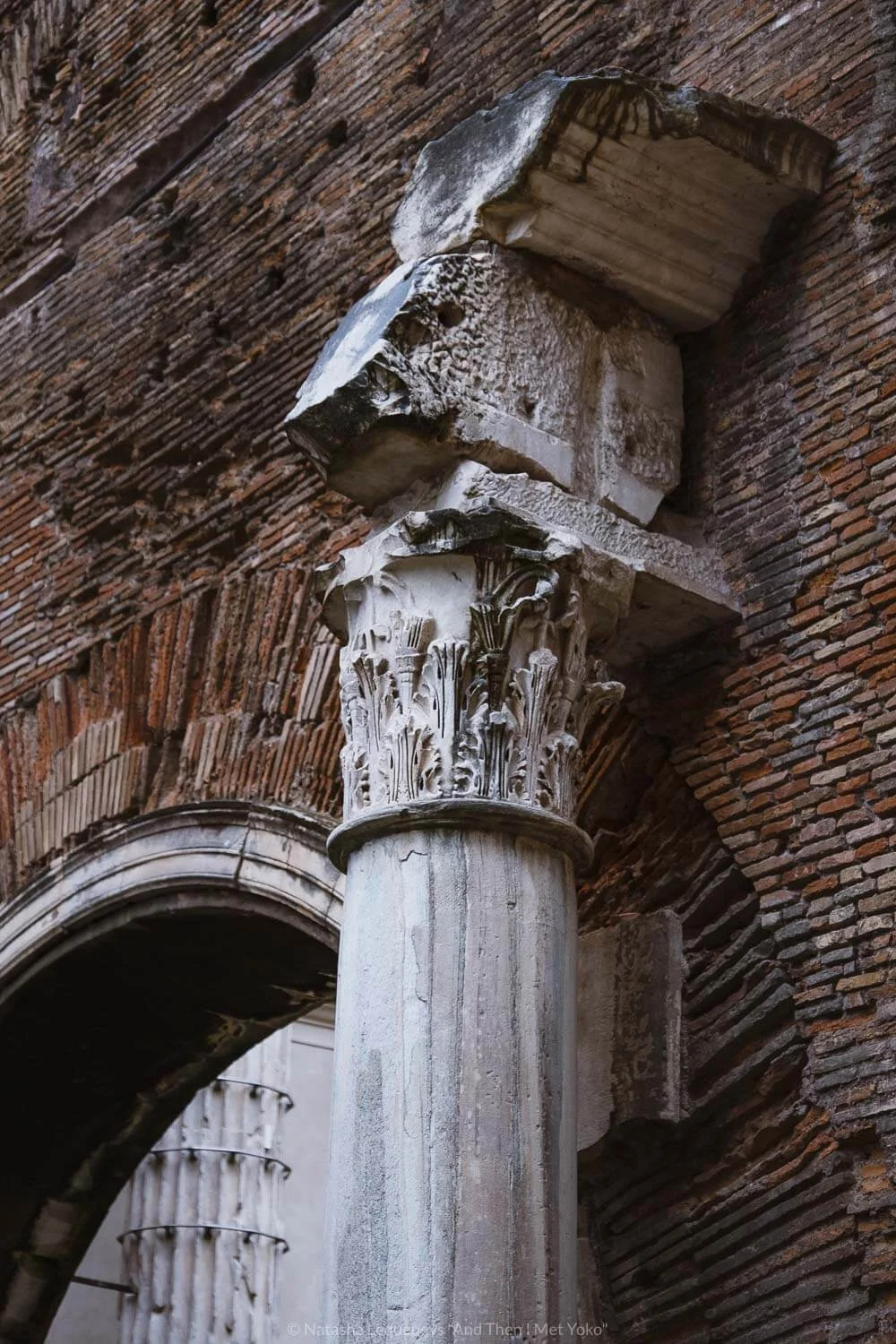


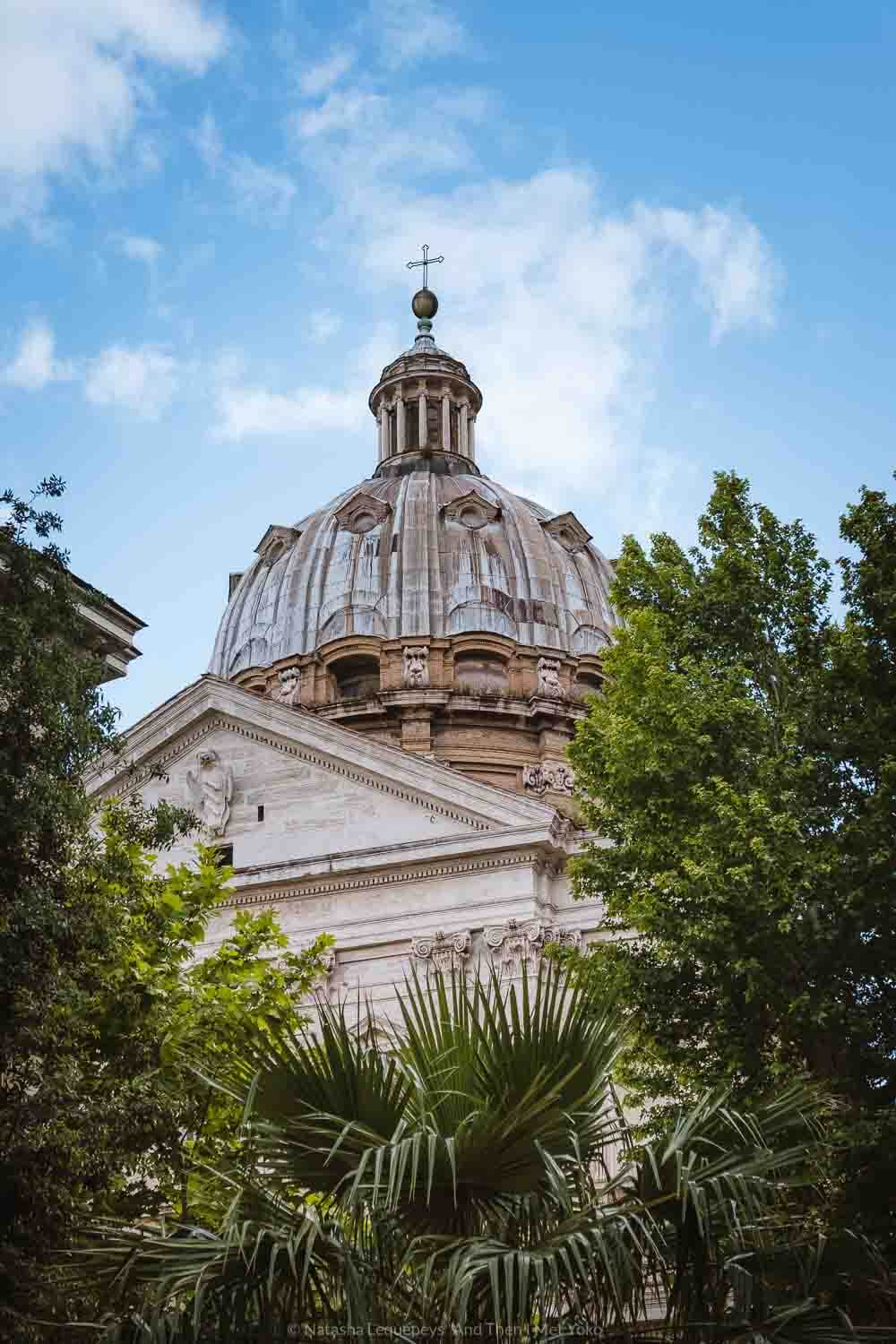
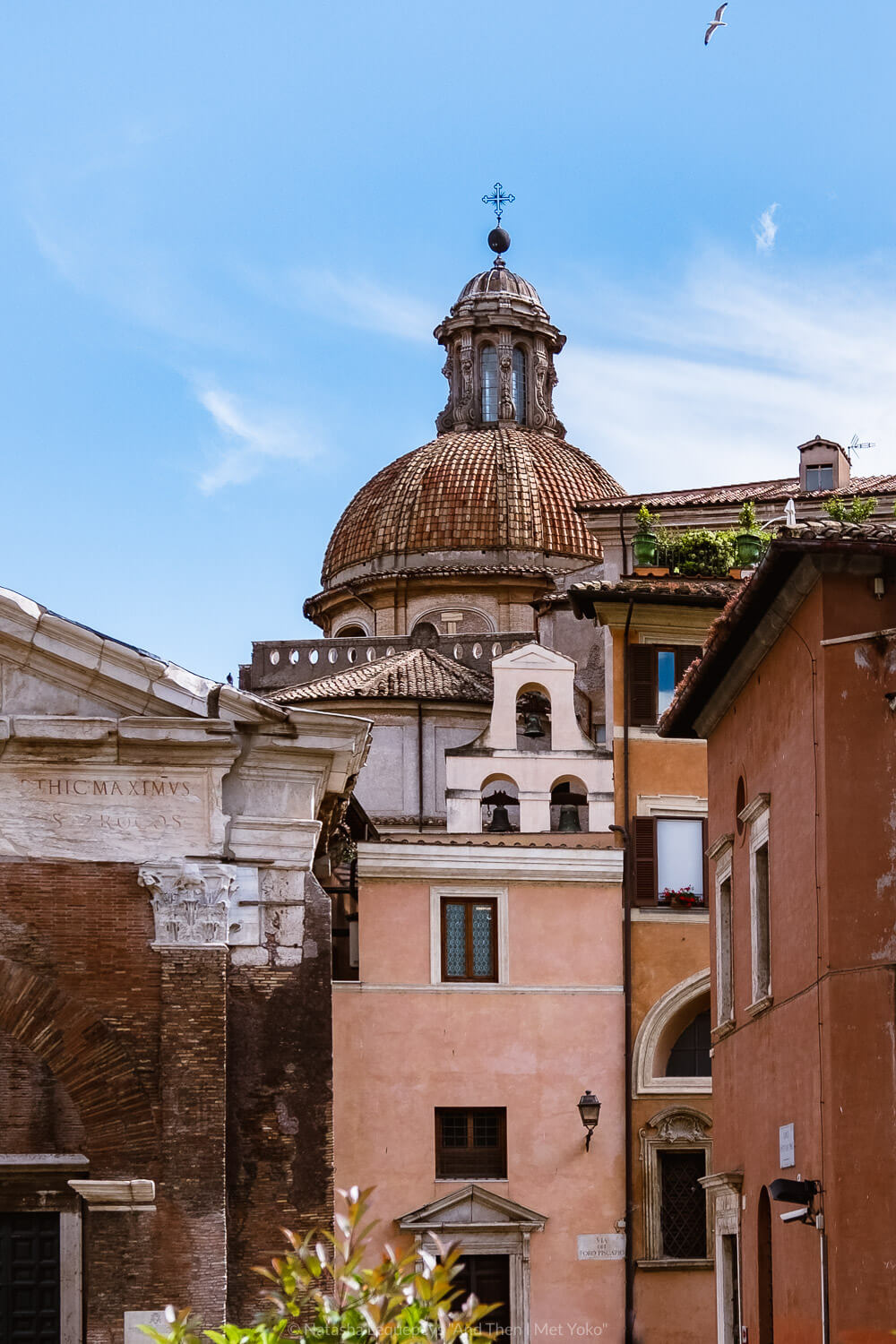



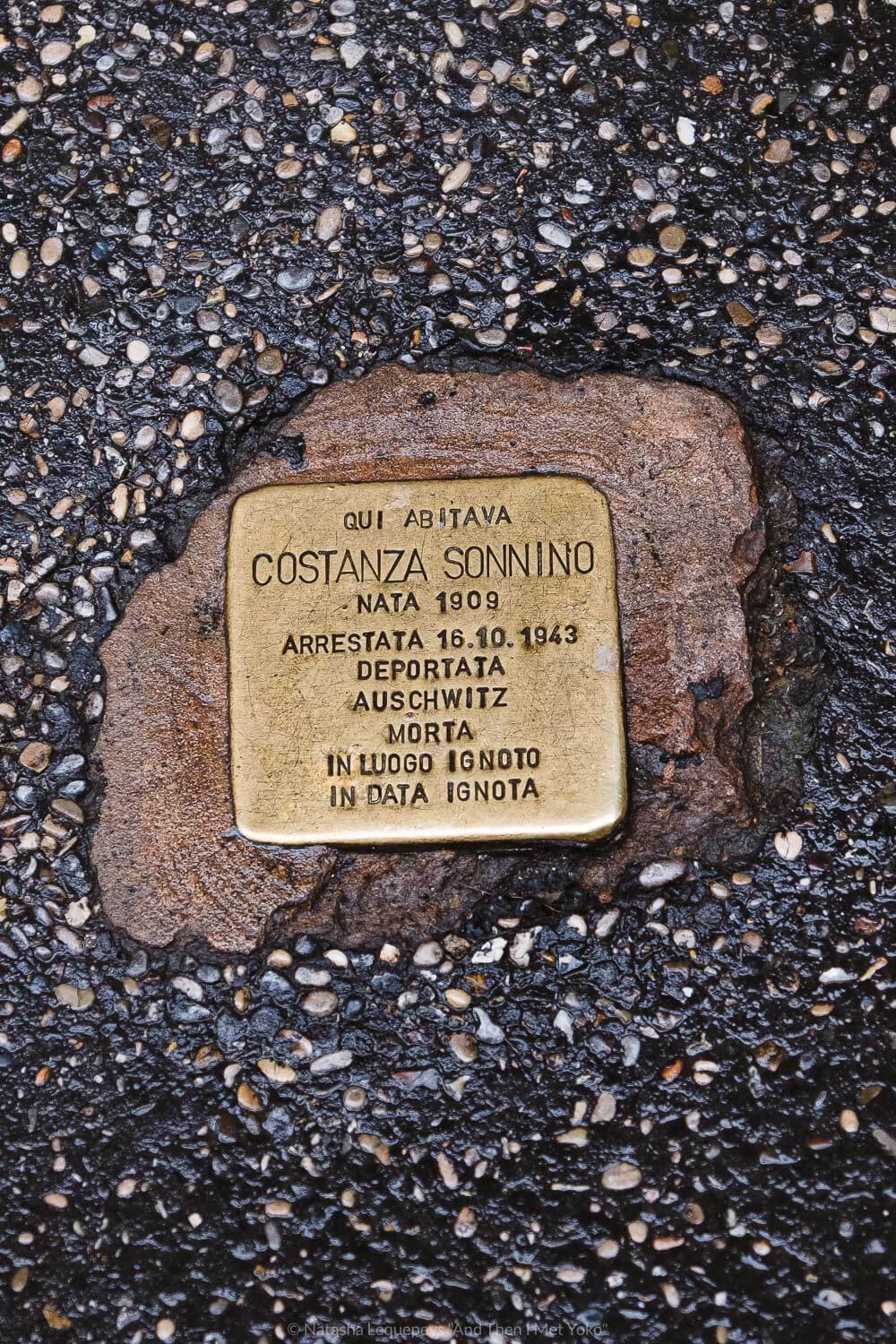






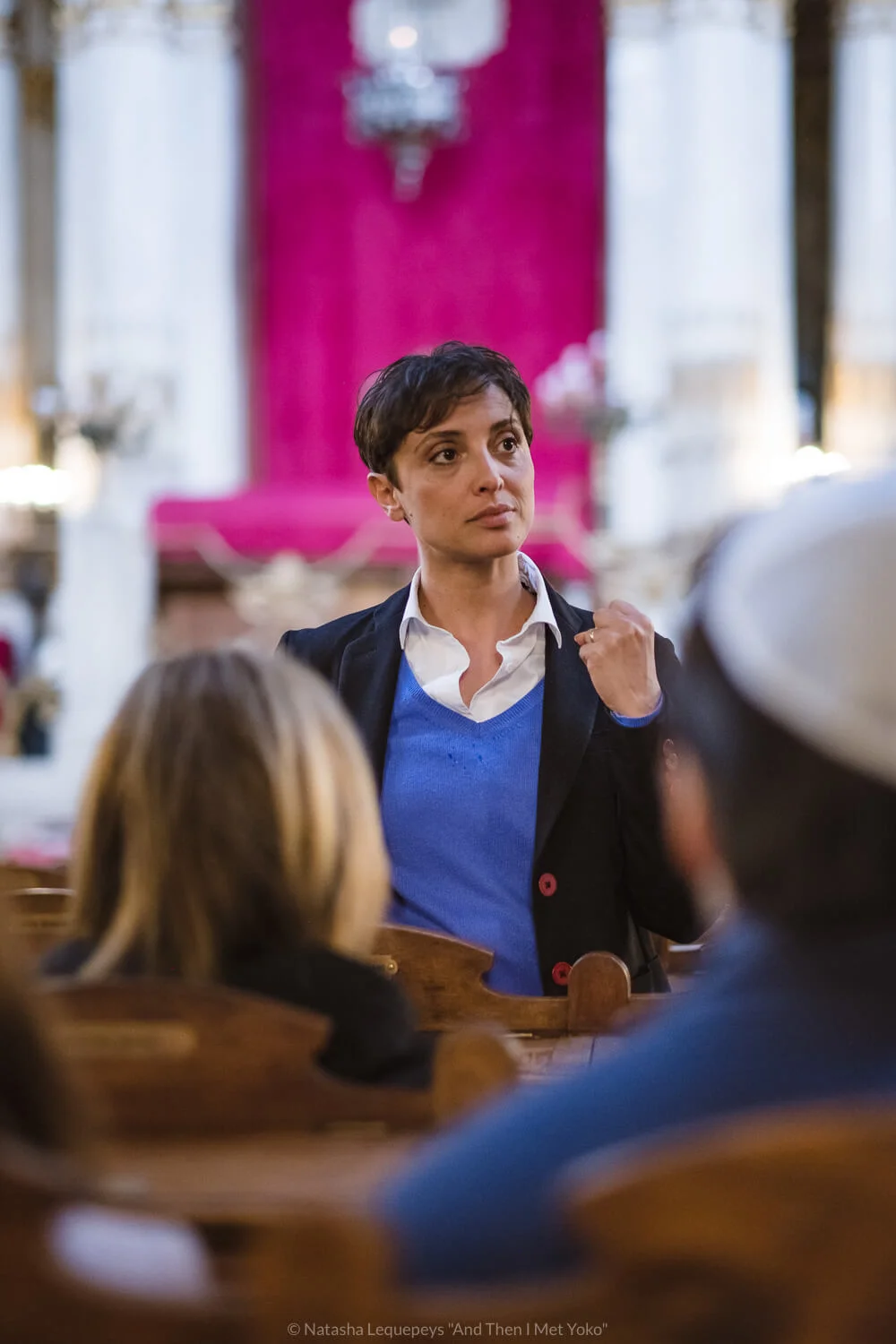
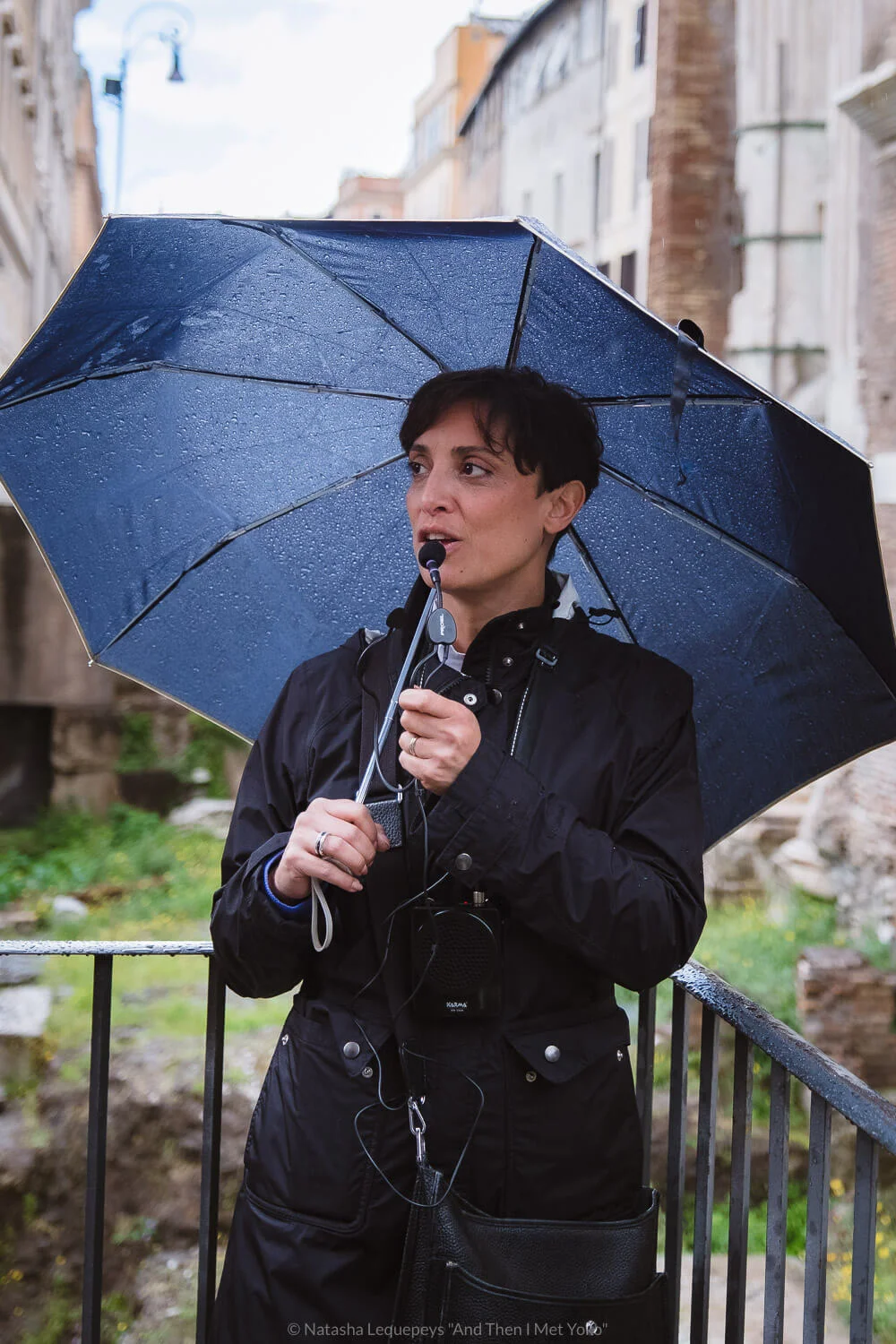














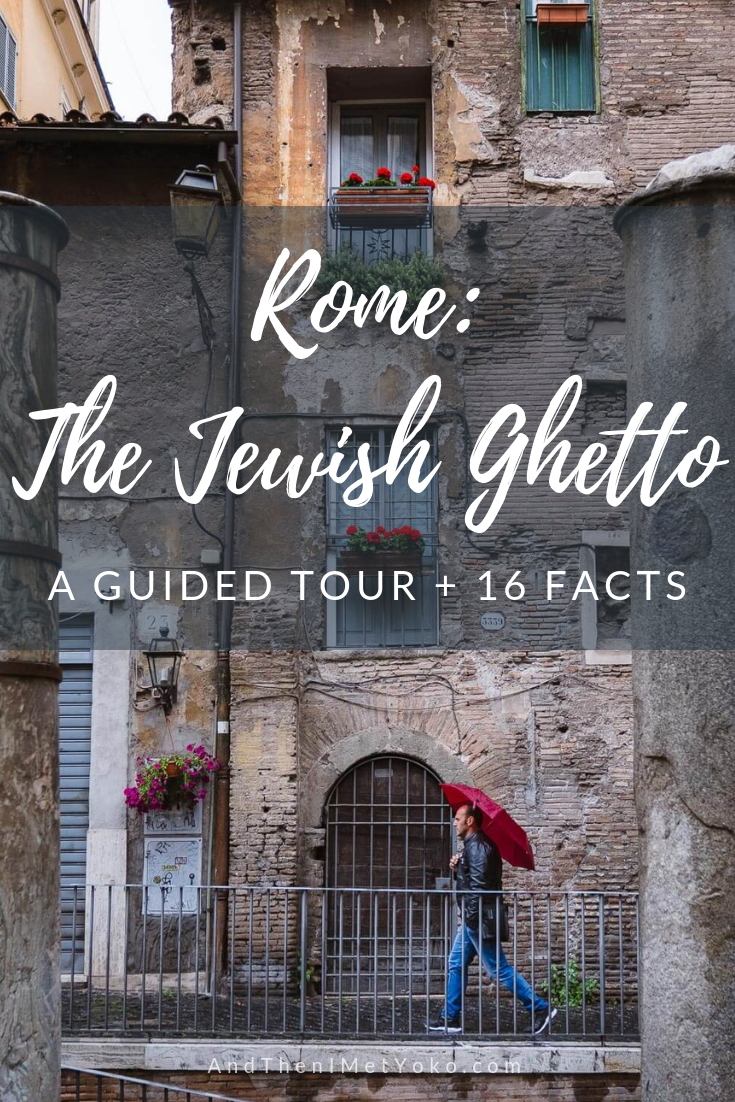

My 3-day itinerary for Rome combines spectacular highlights with some less-visited sights. I’ve also included travel tips and recommendations for accommodation, tours and some of my favourite meals.